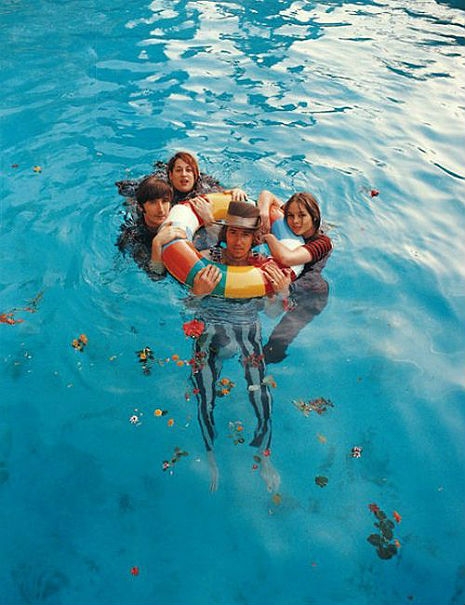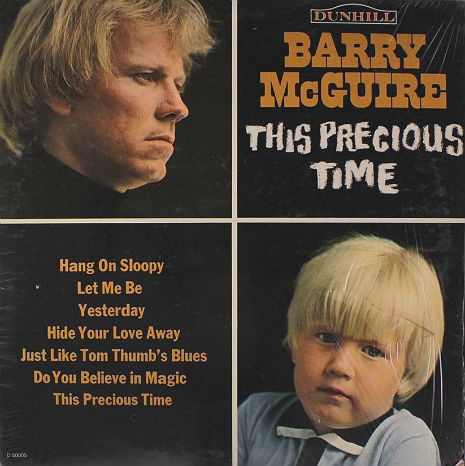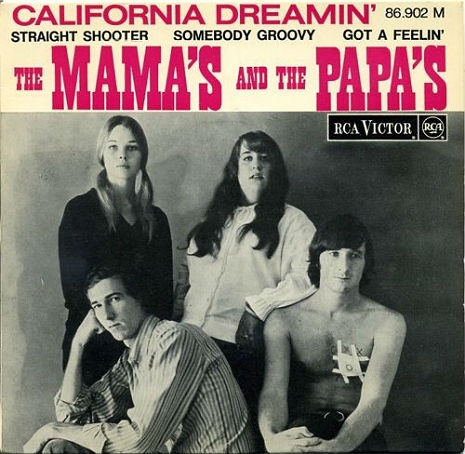
“Eve of Destruction,” written by teenage Bob Dylan fan P. F. Sloan and sung by former New Christy Minstrel Barry McGuire, spent eleven weeks on the Billboard chart in 1965, reaching number one that September. Apocalyptic, adolescent and aporetic, it was loathed as only a hit can be. “Even at the time, Paul McCartney, John Lennon, Paul Simon, Pete Seeger, Noel Stookey of Peter, Paul & Mary, and Manfred Mann lead singer Paul Jones all slagged the song in the press,” Richie Unterberger writes. I suspect most of these musicians just thought the song was not a very good Dylan ripoff, but some public-spirited citizens were seriously concerned that the protest number gave ground to the Reds. “How do you think the enemy will feel with a tune like that No. 1 in America?” future respected foreign policy analyst Rose Parade host Bob Eubanks asked in the pages of TIME.
Staying at the Hollywood Sunset Hotel in the late summer of 1965, Dylan provided his own response to “Eve of Destruction,” as biographer Howard Sounes reports:
‘Get P. F. Sloan,’ Bob demanded. ‘Let’s have P. F. Sloan up here.’
Sloan was duly summoned to the Hollywood Sunset Hotel where Bob played him acetates of Highway 61 Revisited. Sloan rolled about on the floor laughing when he heard ‘Ballad of a Thin Man.’ Bob laughed too. He slapped his knees as if it was the biggest joke in the world. Then he said, seriously, ‘I gotta big problem here. Columbia Records doesn’t have any idea what this song is about. They think it’s communistic.’ Before Sloan had time to digest this shocking piece of information, David Crosby of The Byrds entered the suite and he and Bob went into the bedroom, leaving Sloan on his own. What happened next seems to have been an elaborate stunt arranged by Bob to cause the already excitable Sloan to freak out. ‘Two women come in from the bedroom half-naked – topless – sit down like book ends on the couch, and they don’t say a word, just sit there,’ says Sloan. ‘In from the window, from the outside, comes a man, flying in from a rope wearing a Zorro outfit, with a black hat and black mask, wearing black silk pajamas.’ The man dressed as Zorro sat between the topless girls and stared at Sloan. ‘I can only imagine that Bob had set this up, but I don’t know. And he’s in the other room with David Crosby. About fifteen, twenty minutes go by. The girls get up. Nobody says a word.’ Zorro and the girls exited via the front door, leaving Sloan again on his own. ‘David Crosby comes out of the bedroom and shakes hands with me and Bob continues to play me the rest of the album.’
Musician Ian Whitcomb records how, in November ‘65, one Singing Swallow, then the program director at a radio station in Santa Rosa, California, interpreted the success of “Eve of Destruction.” Whitcomb, who had recently shared the stage with McGuire (“a perfectly charming man, very warm and gentle, not at all like his hate-filled song”) on a Pittsburgh TV show, was visiting radio stations to peddle his single “N-N-Nervous!” Accompanying him was George Sherlock, the subject of the Stones’ “The Under Assistant West Coast Promotion Man,” who, in the excerpt below, has just spun the singer’s new disc. From Whitcomb’s Rock Odyssey:
Spinning his chair vaguely in my direction, [the program director] asked: “When you gonna make another record, son?” “But you just listened to a smash, Swallow,” said George with a boogaloo swing of his hips. “Naw—I mean one I can play.” Before I could answer, Swallow continued with: “Have you guys heard this ‘Eve of Destruction’ mother? It’s a stone fox smash!” And to emphasize his point, he burst open another can of beer, soaking my record. “A lot of the lyrics I can’t make out, but what I can is goddamn treason! Can you believe a guy who knocks our Draft, our senators, our church, our H-bombs—and all on a pop record?” “So I take it,” said George with a dismissive click of his fingers, “that the disc is negative as far as your big boss playlist is concerned?” “Not on your Hollywood scalp doily! It may knock the U.S.A., but I don’t knock success. I grab it by the balls and hang on tight. That ‘Eve’ disc is Dylan made commercial. It’s gonna open up a whole new area. It’s a new kind of loot music under the title of protest, remember that! Now, Whitmore, you got something I can play, something that fits the times and our format—and I’ll spin it like crazy. But until that time, it’s so long and have a happy day. Out!
As you can see, “Eve of Destruction” shocked and convulsed the nation with its radical message that everything might not work out so great. Here are five songs that strove to replace Sloan’s teenage “no” with a paternalistic “yes.”
The Spokesmen, “Dawn of Correction”

The most famous retort to “Eve of Destruction,” beloved of rock writers Greil Marcus and Lester Bangs, came from Philadelphia’s Spokesmen, a trio formed by the partners who wrote “At The Hop” and a local DJ. The three rock professionals bent Sloan’s ungainly rhymes to the service of their relentlessly cheerful view:
You missed all the good in your evaluation
What about the things that deserve commendation?
Where there once was no cure, there’s vaccination
Where there once was a desert, there’s vegetation
Self-government’s replacing colonization
What about the Peace Corps organization?
Don’t forget the work of the United Nations
I’m not sure where the TV clip of “Dawn of Correction” below comes from, but according to lead Spokesman John Madara’s website, they performed the song on American Bandstand and The Lloyd Thaxton Show.
The Spokesmen, “Dawn of Correction”:
But you tell me over and over and over again my friend that you want to hear more ‘Eve of Destruction’ answer songs? There’s more, plenty more, after the jump…








